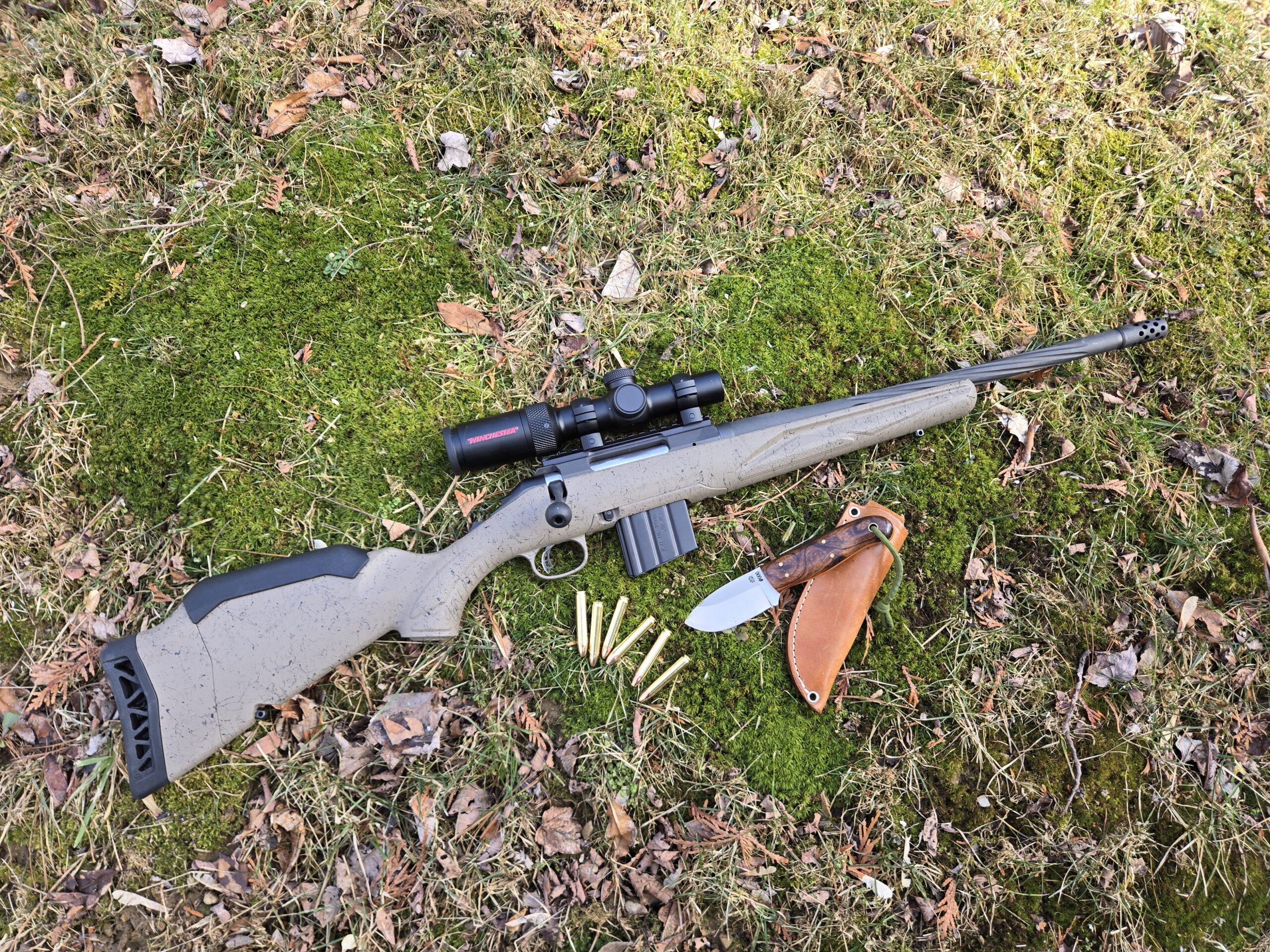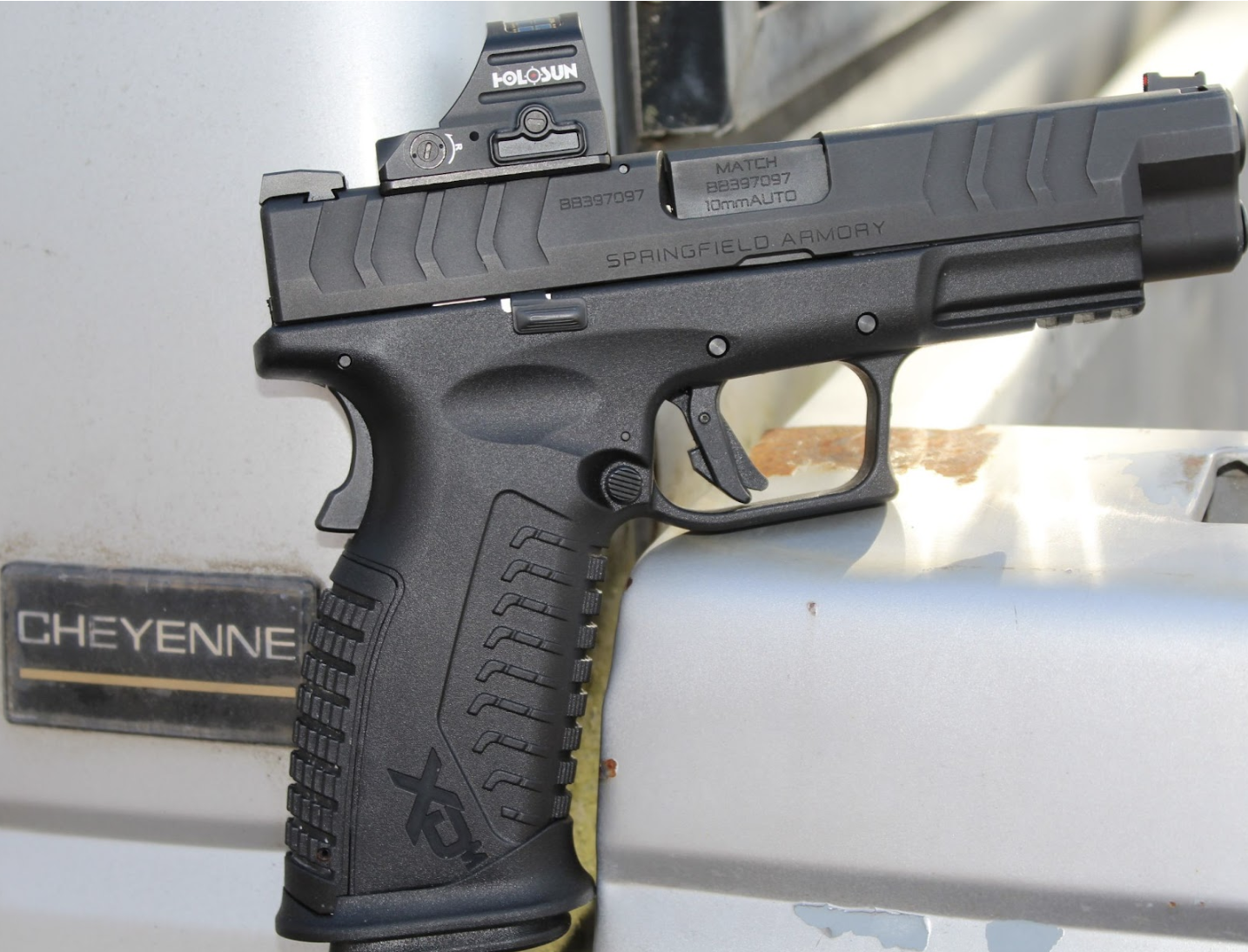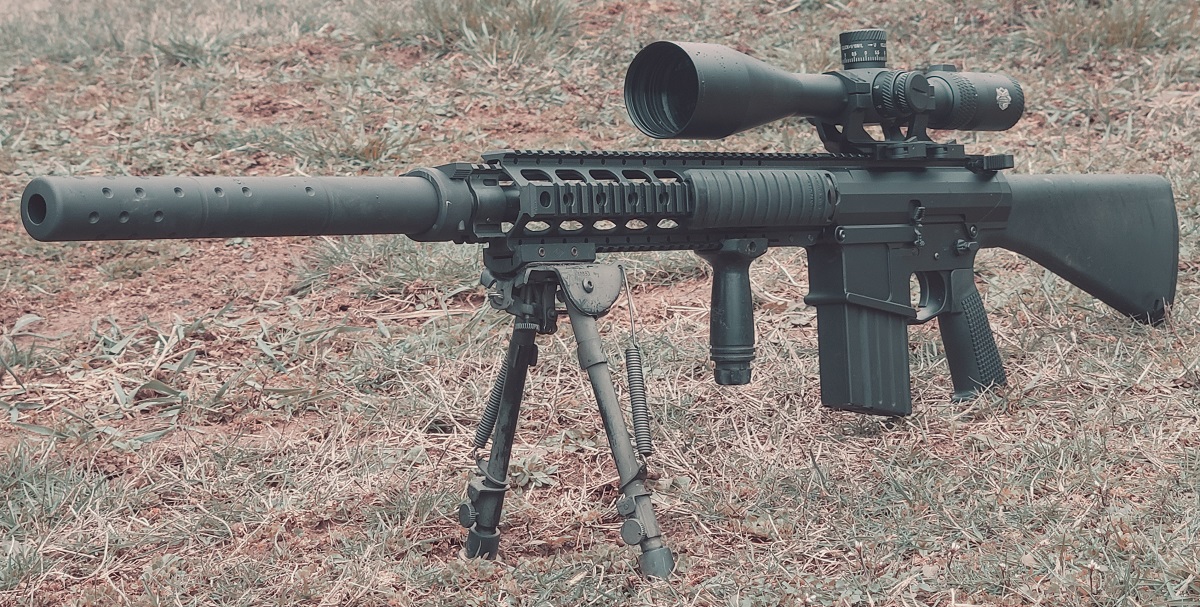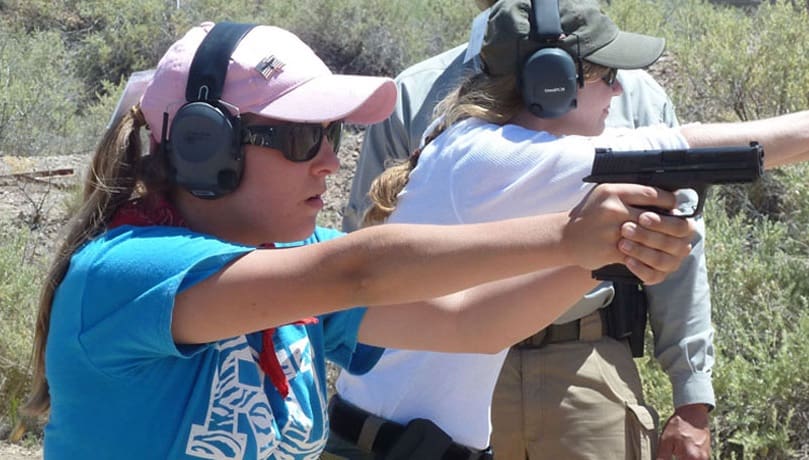
The Remington Model 1100 12 Gauge was born when America had a naval cordon around Cuba, a folksinger named Dylan had just released his first album and we were still testing nukes in Nevada. Cuba’s now our “friend,” that other Mr. Zimmerman’s a Nobel laureate and the only country still detonating nukes is run by a fat little troll with a bad haircut who lives above the 38th parallel.
And the venerable Remington 1100 platform is still going strong, still powdering clays, still striking fear in the hearts of waterfowl from California to the New York islands.
The much-loved scattergun has, of course, evolved over time. There have been multi-various variations of the estimable 1100 over the decades; from simple, affordable field guns for sportsmen to specialized deer slayers to dedicated skeet and trap versions to drop-dead gorgeous fancy grade walnut-clad engraved keepsakes.
Back in 2011, Big Green produced its most radical take on the 1100 theme to date. To paraphrase GM’s genius marketing mavens, the Remington Model 1100 Competition Synthetic is not your (grand)father’s Oldsmobile.

While the Competition Synthetic is another dedicated clays gun, built from the ground up to obliterate flying orange disks, it’s a radical departure from any of its smooth-bore antecedents.

There’s no nicely figured wood, scrollwork or bird dogs cavorting on this gun’s exterior. Instead, the Competition Synthetic’s receiver — still made of sturdy steel — sports a simple silver-nickel finish.

And there’s no camo to be seen. The synthetic fore-end sports an ersatz carbon fiber dip finish. I’m a fan of the look, but YMMV.

That “checkering” pattern is as grippy as an early Steven King novel, without being as abrasive as the author’s views on gun control.

The pistol grip is embossed with a smoother pebbled pattern. While sweaty hands may prefer actual checkering, given an opposable thumb and a full-handed grip, slippage wasn’t a problem even on the hottest days. In Texas.
The forend has moderately grippier molded checkering.

As befitting a dedicated target shotgun, the 1100 Competition features a lengthy 30-inch blued steel barrel. It’s topped with a wide 10mm target-style rib with a small mid-bead and a larger white bead at the muzzle end.

Just for fun (and plenty of competitive options), Remington ships the 1100 Competition Synthetic with no fewer than five chokes. These aren’t no-name tubes cranked out as cheaply as possible. Remmy sourced the full set of Pro Bore extended chokes for this gun from Briley, one of the best names in the business.
You get skeet, improved cylinder, light modified, modified and full tubes. The package also includes a variety of wrenches, springs and spacers.

You’ll need those additional bits to fit the shotgun to your form — something the 1100 Competition Synthetic does exceedingly well. It has an adjustable comb. With a few turns of an Allen wrench, you can adjust length of pull, drop at comb, drop at heel, as well as cast on and cast off.

In a five-stand or sporting clays session, a dedicated clays shooter will easily absorb the shock of a hundred or more rounds. To preserve rotator cuffs and other anatomical features, the soft-recoiling 1100 Competition’s synthetic stock incorporates the impressive Auto-Buster system from Speedbump Stockworks — a sprung shock absorber for your shoulder.
Swapping the Auto-Buster’s standard-fit medium tension springs to damp the kick of softer or stouter loads is a snap. With a few turns of a wrench, you can drop in a lighter or heavier spring set. Both are included with the gun.

That thick, cushy SuperCell recoil pad also takes a bite out of backfire.
The gun’s heft helps, too. Officially rated at 8.25 pounds, our T&E 1100 Competition Synthetic tipped the scales at 9.1 pounds. While you may have to do a few extra curls to get through a full 100-round trap session, the firearm’s physics ensure that your upper body won’t suffer undue hardship while taking part in the competitive scene.
The final part of the 1100’s recoil reduction strategy: An over-bored barrel and significantly lengthened forcing cone. While the set-up’s effect on felt recoil is minuscule, the elongated cone likely has a beneficial effect on your shot strings, making for more consistent patterns.

The 1100 Competition Synthetic’s nickel trigger trips cleanly at just over four pounds. While this claybuster prefers a trigger that touches off somewhere between 2.5 and 3 pounds of pressure, the Remington’s trigger is good enough for government work.

Unlike most other semi-auto shotguns, the 1100 features an ambidextrous bolt release (or carrier release, as Remington prefers to call it). It’s located on the bottom of the gun nestled into the carrier, letting southpaws feel right at home.

I fed the Model 1100 Competition Synthetic a steady diet of target loads and light field loads, including Remington STS #8s, Nitro Sporting Clays #7 1/2s, Federal Premium’s new Hi-Bird #7 1/2s and my own home-brewed #8s (a blend of STS shells, Winchester primers, Claybuster wads and Hodgdon Clays powder).

With the modified choke, all four flavors patterned well enough to be deadly at 30 yards. While the results were almost too close to call, I’d have to give the edge to the Federal Hi-Birds.
One thing that hasn’t changed since the Kennedy administration: The Model 1100’s tried-and-true gas system.


While it may not be the most up-to-date semiauto design, the 1100 gas system has worked smoothly and reliably in more than four million shotguns. It still features the traditional barrel seal (O-ring) and piston ring (the newer version). That makes takedown and the cleaning process slightly more involved than with the latest autoloaders, but it’s nothing you can’t manage without the assistance of a gunsmith.
Just be sure to wipe the gun down regularly and keep a couple of extra O-rings in your range bag (one spare comes with the gun). If it breaks, the 1100 Competition Synthetic won’t cycle. Which will ruin your whole day.


To ensure smooth operation, all of the shotgun’s internal parts are nickel-Teflon coated, including the receiver, bolt, magazine tube and other bits and pieces. Remington says the coating offers reliable cycling and prevents undue wear.

The Remington Model 1100 Competition Synthetic is a well-conceived, carefully executed claybuster. Made in the U.S., it measures up favorably to its imported competition — guns like the Browning Maxus Sporting, Benelli SuperSport and Beretta A400 Xcel. And as your FFL will tell you — it does it for hundreds of dollars less. The Competition Synthetic also offers more recoil mitigation and cast adjustment for better fit-customization options. Weight aside, what’s not to love?
Specifications Remington Model 1100 Competition Synthetic
Gauge: 12
Capacity: 4+1
Chamber: 2 3⁄4 inches
Action: Semiautomatic, gas-operated
Stock: Adjustable target-style stock (polymer stock)
Sights: Twin target-style bead sights (front and mid beads)
Choke Tubes: 5 Briley chokes (Skeet, IC, LM, M, F)
Barrel length: 30 inches with 10mm vent rib
Overall length: 50.5 inches
Length of Pull: 14.5 inches (adjustable with spacers)
Finish: Nickel-coated steel receiver, coated internals with nickel-Teflon finish
Weight: 8.25 pounds (9.1 pounds as tested)
SKU: 82821
MSRP: $1,305 (about $1,000 retail)
Ratings (out of five stars)
Fit and Finish: * * * *
Both the nickel receiver and the carbon fiber dip synthetic parts are nicely finished and look sharp. Barrel blueing is deep, even and smooth. The synthetic polymer stock and forend are finished with a carbon graphite appearance. The buttstock-to-receiver fit could be smoother and some tooling marks are clearly visible in the interior of the receiver, not unusual in a gun at this price point.
Ergonomics * * * * *
This shotgun can be configured to fit almost anyone. Stock adjustments are easy to make and stay firmly in place through hundreds of rounds.
Reliability: * * * * *
Ignoring conventional wisdom that says you should clean an 1100 about every 100 rounds, I only gave it one wipe-down. I shot almost 700 rounds without a hiccup.
Value: * * * * *
It only looks like carbon fiber. But given its performance and features compared to the competition, the Remington 1100 Competition Synthetic is a lot of gun for the money (and includes ProBore choke tubes).
Customize This: * * * * *
Because the 1100’s been around for 55 years, there’s a plethora of aftermarket parts and adjustment options to checkout — replacement triggers, extended bolt handles, extended carrier releases, alternate trigger shoes, etc.
Overall: * * * * 1/2
The Model 1100 Competition Synthetic is one of the softest-shooting shotguns you’ll ever shoulder. Despite its weight (or maybe because of it), it’s one of the most effective and complete out-of-the-box skeet or trap guns money can buy.
More from The Truth About Guns:
Best 12-Gauge Shotguns Under $600: Stoeger, H&R, Mossberg, Benelli, Weatherby
Gun Review: Remington Versa Max Tactical Shotgun








meh
Little-known factoid: “Remington” is an ancient, Algonquin rejoinder which likely translates to, “I have nothing else to say”.
Does this guy know how to party or what?
I’ve had my bad experiences with Remington but I’m still pleased they can make a good product on occasion. I’d honestly be happy if they turned it all around.
There’s plenty to like about this gun. While most clay shooters prefer an over/under, this will get you in the game for less than half the price of one of those, once you factor in the adjustable stock. And shooting clay targets with a gun that doesn’t fit is no fun at all.
The only nit I would pick is, many shooters prefer an improved modified choke for 16 yard trap, and trap is the most common of the shotgun sports and almost always the sport that new shooters start with.
“Weight aside, what’s not to love?”
Weight (mass) is a good thing in a competition shotgun. 9-10 pounds is common on the trap range. Mass absorbs recoil, which is important when you’re going through 4 or more boxes of shells in an evening.
“What’s more, the synthetic forend sports an ersatz carbon fiber dip finish.”
Just WTF is a “carbon fiber dip finish”? Is it a carbon fiber component or not?
“I’m a fan of the look, but YMMV.”
You got that right, my miles vary significantly on that one.
I am sick and fucking tired of fake carbon fiber crapola, just for “the look”…
Totally, if you want the carbon fiber look: MAKE IT OUT OF CARBON FIBER
The stuff isn’t that expensive, rare or hard to work with anymore. Really not much different from fiberglass.
Oh, and not sure if /sarc about the “Just WTF is a “carbon fiber dip finish”? Is it a carbon fiber component or not?” comment but it’s the same skin dip stuff that they use to make those forest camo patterns on shotguns, I’m sure. So no, it’s most assuredly not carbon fiber.
That explains it…
All I know of ‘dip’ is what they do to wheels, where an oil-based paint is floated on water, then they ‘dip’ the wheel through the oil film.
Is what you’re referring to like those thin-film decals used on plastic models? You ‘float’ them off and onto the plastic?
The fake carbon crap I see on import cars is like an adhesive decal that they apply to their hoods and useless rear wings…
For something like a gun that is going to need some durability they will use an epoxy based ink. But yeah the process is to inkjet print the pattern on a pool of water, dip it and let it cure.
Ah, OK.
To clarify, the decal material has a *very* thin veneer of woven carbon fiber in it with clear plastic over it, and an adhesive backing. And they sell it as “real carbon fiber”. And it apparently isn’t inexpensive.
It’s not structural, it’s just for looks, and that’s the stuff I see on import cars that pisses me off. The higher-end bike world has that problem as well, I’ve seen a tiny bit of real carbon fiber overlayed on the exposed ends and center sections of anodized black aluminum road bike handlebars, giving the illusion the entire assembly is the real deal, instead of the reality of a $50 bar posing as a $300 bar.
A carbon bike is real nice, until you crash it. You run the real risk of tossing a kilobuck frame in the trash, as damaged carbon frames are usually not considered repairable.
I’m a natural spaz, I launch myself over the handlebars about once once a year or so. I can bend aluminum back in shape to some extent, I’m keeping my ancient 1989 Trek frame, I can’t afford to replace a carbon one…
Yeah those little adhesive backed bits probably are real CF but I can’t fathom why they would be so expensive. It’s not like you’re using structural pre-preg weave to build a supercar monocoque. I have a friend that fucks around with CF molding as a hobby and he’s not breaking the bank doing it.
Im more interested in long term reliability. Seen a lot of bad things coming from remington recently. The r51 for instance.
Also new 870s that had alot of metal shavings in the mag tube. Saw more than one.
700s with the action seated so poorly in the stock the barrel appeared to be bent.
783s that had very gritty actions.
I would love to get another 700 with a wood stock.
I have a 20 year old 700 and i love it. But the new ones, im not so sure.
Does anyone have a newer 700? Is the quality back?
These are good guns. I built a very similar gun but used an 11-87 as the platform because I wanted a more versatile gun that could be used for clays with target loads and for ducks with 3″ magnums. I bought an 1187 receiver off Shotgunworld, a barrel from Midwest gunworks and a Jack West carbon fiber stock with a Rucker bumpbuster on it. My LOP is 13 7/8″ so Ken Rucker put a custom made skinny recoil pad on it. The gun is a beast but when I shoot my favorite duck load ( Kent tungsten matrix waterfowl loads in shot size #5) it is deadly out to at least 70 yards through a Modified choke and there is simply very little felt recoil. A gas gun with a bump buster on it is as soft a shooting gun as exists today. I spent a whole lot less than what Remington wants for a new one and I really like it a lot.
Regards,
Steve
Steve,
I was thinking of a 20 gauge semi-auto shotgun for home defense. And then I looked at some prices. Sheesh!
Is it possible to acquire a reliable new 20 gauge semi-auto shotgun (preferably with an 18 to 20 inch barrel) for under $600?
Mossberg makes very reliable semi autos which would make good home defense guns and they are reasonably priced. Good luck.
Oh wow, I just looked up Mossberg semi-auto 20 gauge shotguns and I was thrilled to see that they sell for somewhere around $450! Thanks for the tip!
Still keeping ye’ on O ring I see. Got to keep and extra wherever the gun goes.
Question to the reviewer, did you inspect the chamber and rail/slide machining?
Been a problem on newer 11-87s and 1100s.
Yes. All looked good and reasonably clean for internal parts. Chamber is excellent.
Thanks.
I like everything but the carbon fauxber furniture. So… not much, really. Also; Remington.
Man, I keep going back and forth on whether to get gas operated or inertia driven.
Inertia = cleaner, simpler, lighter. Gas = heavier, softer shooting. I have both and prefer a softer gas gun, but that’s just me.
A few things that appear to be missing from the overall package:
– spacers/wedges to adjust the cast of the stock, much as Beretta gives you.
– an IM choke; in my trap/sporting clays shooting, I rarely change the choke from IM. The only time I change chokes is when a fit of insanity comes over me and I try shooting skeet.
– a shell catcher. On many trap ranges, semi-autos are not looked upon favorably, because they dump empties into the lane to your right, which annoys the shooter to your right. The cheap solution is a rubber band around your receiver, which interrupts your sight line. There are shell catchers made by Birchwood Casey, T&S, and others for this purpose. They affix to your receiver with strong double-faced tape.
The ejected shell issue is one of the reasons why O/U’s are so popular in shotgun sports. Instead of ejecting to the side, they eject straight back (or whereever your breech is pointed when you break the gun open). You can also remove the ejectors from most O/U guns and have just shell lifters, which allows you to just pick your shells out and drop them in a bag on your hip.
Agree on the wedge for the stock/receiver join to adjust cast off/on, though the cast on/off adjustment of the comb gives you a fair amount of latitude.
Agree on the tube. I’d have swapped the light modified for an IM.
As for a shell catcher, I haven’t seen a semi-auto shotgun that ships with one. As you note, lots of aftermarket options.
The adjustable comb height is a feature I should have said more positive things about. That’s a high-end gun feature on a gun with a very affordable price tag.
One of the most important features of a shotgun stock is that it fit the shooter very well. Because shotguns have no rear sight, your eye is the rear sight. To increase your score with a shotgun in shotgun sports, you must be able to mount the shotgun every single time and achieve a repeatable mounting of your face to the comb and the butt into your shoulder. Being able to adjust the comb height, cast on/off, and pull length are very important aspects of fitting the gun to the shooter, and I have to applaud Remington for providing those features in this price range.
Find a clean, used Beretta 390 sporter and live happily ever after. Best semiauto ever made, according to many users, even surpassing Beretta’s more recent offerings such as the 391 and A400 for simplicity, reliability and durability. Big bonus: no phony carbon fiber dip(sh*t) concealing a low grade hardwood stock.
The 1100 has synthetic under the faux carbon fiber.
I agree. My semi-auto is a A390, synthetic stock, parkerized barrel, aluminum receiver. It’s been dropped off mountainsides whilst chukar hunting, it’s followed me down other mountainsides while hunting blues, it’s won Annie Oakley competitions (after suckering in the city slickers by lubing it with great exhibition by pouring a dollop of Delo 15W40 diesel motor oil into the action). It sucked as a trap gun, but it worked just fine as a sporting clays and 5-stand gun. Reliable as the day is long, only four parts in the gas system, and they are all too large to lose.
I have no idea why Beretta made a 390 or 400. Have no clue. Not as a shooter, but as a gunsmith. No clue what problem the 391 or 400 are solving.
Anyone know if you can scuff up the finish enough to re-paint it? That faux carbon-,fine looks is the worst! I’d be ashamed show up at the range with something that tacky.
In order to gain a possible short term political victory the NRA alienated more than half their members. I am willing to bet they lost over a million members because of this PR disaster. Pyrrhic Victory at best.
I have shot competition skeet for about 7 years and the Remington 1100 competition improved my game. It is the first gun I have owned that actually fit me. The weight distribution and balance is perfect. Can’t buy a better gun for the money.
The first time I shot this gun I ran an easy 25 straight in Skeet. I enjoy the extra weight, and the adjustability, not found in my Beretta.
I know some don’t like the synthetic stock, but I didn’t buy it to look at it. I have a nice O/U for trap, but to be honest the 1100 fits me better.
The only thing I need to buy is an IM choke and a Timney trigger sear.
Don’t take this gun out of your “considering column” until youve held it in your hands and shot a round or two. You’re desire to bash its stock will disappear after you see how it smokes clays.
A friend just bought a used one, and we strapped on my trusty 1100 26 ” skeet barrel, and it functioned beautifully. it’s a shame it only comes with a 30″ barrel.